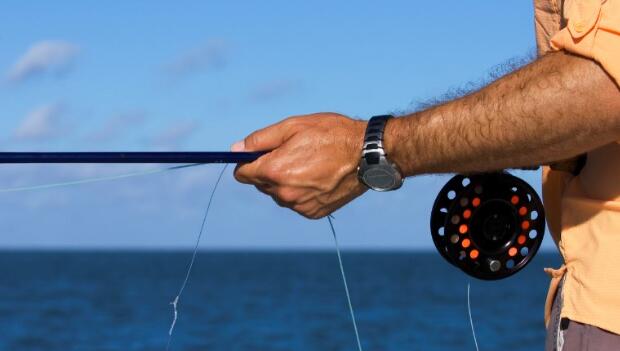
One of the most intimidating gear decisions for the new fly fisher is selecting the right fly rod for the type of fishing you want to do. The decision making process may be more complicated now than it has ever been.
In the past few years, there has been a surge in popularity of longer than "average" Spey casting (and "switch") rods as well as shorter than "average" rods that have their own special purposes. If you also consider the recent emergence of traditional Japanese Tenkara fly fishing into the American fly rod market... the process of selecting the right length rod is certainly more confusing than ever.
What is the length of the "average" fly rod? There really isn't a standard (or traditional) length for a fly rod. In fact, the "average" fly rod today may be both shorter and longer than a lot of "traditional" rods. Simply put- there is no standard (or traditional) length.
Fly rod manufacturers today sell more rods in 9-foot lengths than any other, but that doesn't make it "standard." It does make it "average." For a fly rod, 9 feet is a "middle of the road" length. It's by no means short, but as far as fly rods go it's really not very long either. Even though 9 feet is longer than most anything anglers that fish by other methods will use (except maybe a good ol' cane pole)- it's not really that long when compared to a 15 feet (or longer) Spey casting rod.
What length of rod is right for me? In order to answer that question you really need to be thinking about the type of water you plan to fish. Will you be fishing small Brook Trout streams in the Appalachians that you could practically hop across... or wide open western rivers? Will you be fishing something in between like a 50-foot-wide wadable spring creek? Will you be fishing for Bonefish in the flats, or Largemouth Bass on a lake? Will you be fishing from a boat, or maybe a float tube or kayak? All of these things need to be taken into consideration.
Of course, the other major factor in selecting a fly rod is determining what line weight is appropriate for the fishing you plan to do. The size and species of fish you plan to pursue will largely determine the line weight for you. Many authorities will recommend a certain line weight for a certain species of fish that will create the most "sporting" situation for the angler. Often, these recommendations are a bit under-weighted, and result in overplaying fish during a fight.
Not only do you need to consider the species of fish you're after when choosing a line weight, but the average weight of the flies you intend to cast most effectively with your rod. You can cast smaller flies with a heavier weight rod much easier than you can cast heavier flies with a lighter weight rod. There are already some excellent resources available online for helping you choose the right line weight rod. There is yet another factor to consider, which is "action" or "flex." You can read a bit more about "flex" on The Orvis Website.


